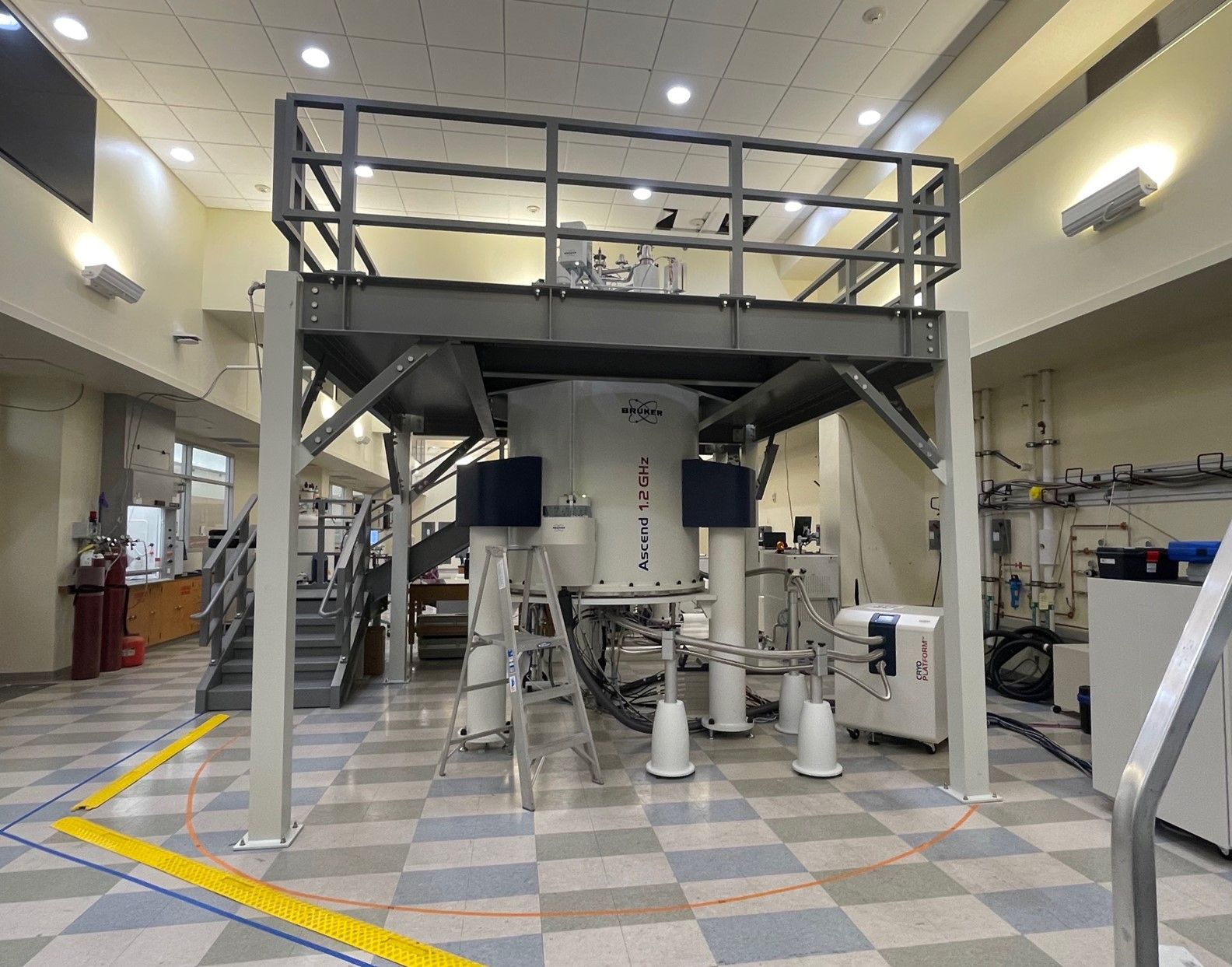Bruker Installs 1.2 GHz NMR System at The Ohio State University
This is the first 1.2 gigahertz nuclear magnetic resonance spectroscopy system in the United States; eight are currently installed in Europe.
Bruker Corporation announced the successful completion of the installation of a 1.2 gigahertz (GHz) nuclear magnetic resonance (NMR) spectroscopy system at the National Gateway Ultrahigh Field NMR Center at The Ohio State University in Columbus, Ohio, the company said in a press release.
New 1.2 GHz AVANCE® NMR system at The Ohio State University | Photo Credit: © Business Wire

This marks the first 1.2 GHz NMR in the United States, with eight already having been installed in Europe (with four more on order), a novel single-story 1.0 GHz NMR in Japan, and a 1.2 GHz NMR on order in South Korea.
Two 1.1 GHz NMRs have been funded, like the one at Ohio State, by the U.S. National Science Foundation (NSF): one already installed at the University of Wisconsin-Madison and another on order at the University of Georgia. There is also one in use at St. Jude Children’s Research Hospital in Memphis, Tennessee.
The 1.2 GHz NMR spectrometer “enables high-resolution liquid and solid-state NMR experiments,” according to the press release, and will be used to study advanced materials such as batteries as well as biological molecule structure and dynamics. GHz-class NMR, the company said, advances research into functional molecular disorder across multiple areas of pathobiology.
The end goal, according to Bruker, is to better understand the underlying mechanisms of diseases including cancer, Alzheimer’s disease, cardiovascular disease, and viral infections.
Scientists Break Century-Old Barrier to Synthesizing Anti-Bredt Olefins
November 18th 2024Researchers from UCLA have developed a novel method to synthesize and stabilize anti-Bredt olefins (ABOs), defying long-held beliefs about their instability. This breakthrough, published in Science, paves the way for new applications in synthetic chemistry by leveraging the unique reactivity of these geometrically distorted molecules.
NIR, IR, UV-vis, and NMR Spectroscopy Drive New Insights in Olive Oil Quality and Fraud Prevention
November 11th 2024A new review highlights the promising role of non-destructive spectroscopy techniques in enhancing olive and extra virgin olive oil (EVOO) quality assessments. By combining spectroscopy with imaging, researchers uncover innovative ways to determine product authenticity and improve quality control in olive oil production.